Do you ever feel like a thunderstorm is brewing right behind your eyes? Migraines can be the worst, putting a serious cramp in your day (and mood). But what if there was a natural way to chill those throbbing temples and send that head-pound into hiding?
Enter yoga! Yes, those calming stretches and breathwork we all associate with zen masters might be your secret weapon against migraines. In this blog, we'll be diving into the world of yoga for migraine relief. We'll explore some awesome poses (fancy word for yoga positions) – also known as asanas – that can help loosen tight muscles, improve blood flow, and melt away that migraine misery.
What is yoga for migraine?
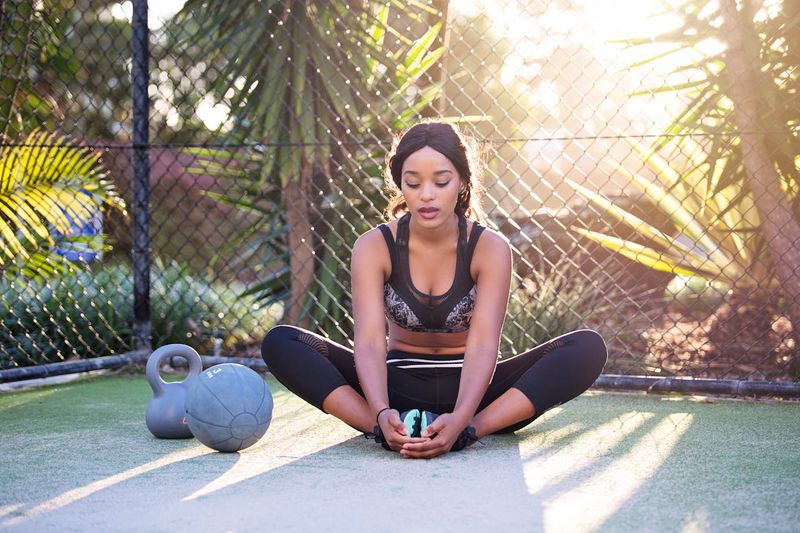
Yoga for migraine refers to the practice of using specific yoga poses and techniques to help manage and alleviate migraine headaches. Migraines are a type of headache characterised by intense, often debilitating pain, and they can be accompanied by symptoms like nausea, dizziness, and sensitivity to light and sound. Many people find that certain triggers, such as stress or poor posture, can initiate or worsen their migraines.
Why yoga for migraines?
Migraines can be tricky. They often come with nausea, sensitivity to light and sound, and, of course, a pounding headache. Medication helps, but incorporating yoga for migraine headache relief into your routine can provide additional benefits. Yoga helps by:
Reducing stress: Stress is a significant trigger for migraines. Yoga, with its focus on mindfulness and breathing, can help manage stress.
Improving circulation: Some yoga poses increase blood flow and can potentially ease the tension that contributes to migraines.
Enhancing flexibility and posture: Poor posture can tighten the neck and shoulder muscles, contributing to headaches. Yoga can correct this.
Essential yoga poses for migraine relief
Let’s talk about some specific yoga poses, or asanas, that are known to help with migraines. Remember, while yoga for migraines is beneficial, it’s important to approach these exercises gently, especially during a migraine attack.
Child’s Pose (Balasana)

How it helps: The Child’s Pose is a resting pose that helps calm the brain and relieve stress and fatigue. It gently stretches the lower back and hips, allowing the body to relax and release tension. This pose also helps normalise blood circulation after headstands and promotes a deep, meditative state that can alleviate migraine symptoms.
How to do it: Begin by kneeling on the floor, touching your big toes together and sitting on your heels. Separate your knees about as wide as your hips. Exhale and lay your torso down between your thighs, with your forehead touching the floor. Extend your arms forward with the palms down, or lay them alongside your body with palms up. Hold for 1-3 minutes.
Cat-Cow Pose (Marjaryasana and Bitilasana)
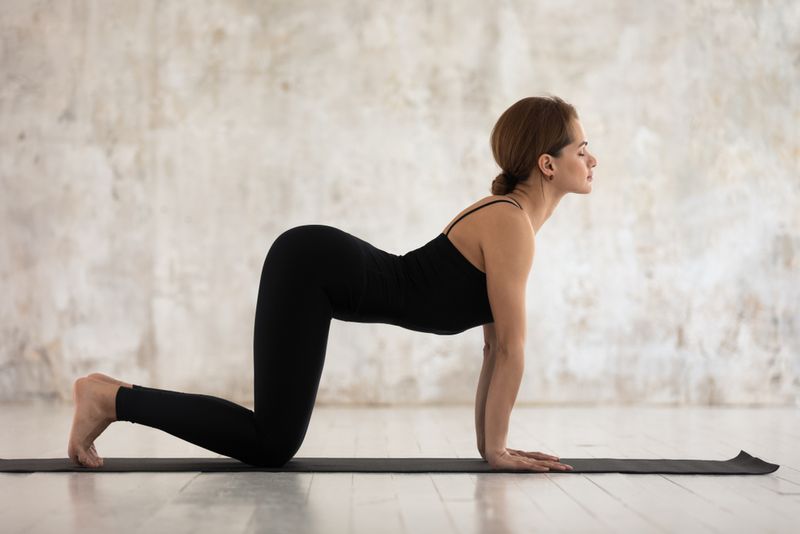
How it helps: This flow sequence gently massages the spine and belly organs while also stretching the back, torso, and neck. This can help in reducing stress and calming the mind, which are essential for controlling migraine triggers.
How to do it: Start on your hands and knees in a tabletop position. As you inhale, arch your back, let your belly drop down, and lift your head and tailbone toward the ceiling (Cow Pose). On the exhale, round your spine toward the ceiling and tuck your chin toward your chest, releasing the tension in your neck (Cat Pose). Continue flowing between these poses for 1-2 minutes.
Bridge Pose (Setu Bandhasana)
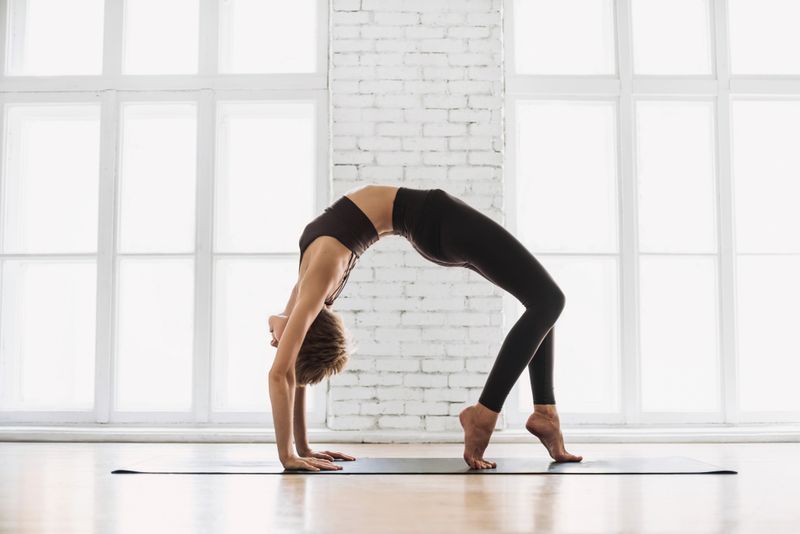
How it helps: This pose helps open the chest, heart, and shoulders. It increases blood circulation to the brain, which can alleviate migraine symptoms. It also stretches the spine and neck and can help reduce anxiety and stress.
How to do it: Lie on your back with your knees bent and feet flat on the floor, hip-width apart. Place your arms at your sides with palms down. Press your feet and arms onto the floor and lift your hips toward the ceiling. Clasp your hands under your lower back and extend your arms, pushing your upper body up. Hold for 30 seconds to 1 minute.
Forward Bend (Uttanasana)
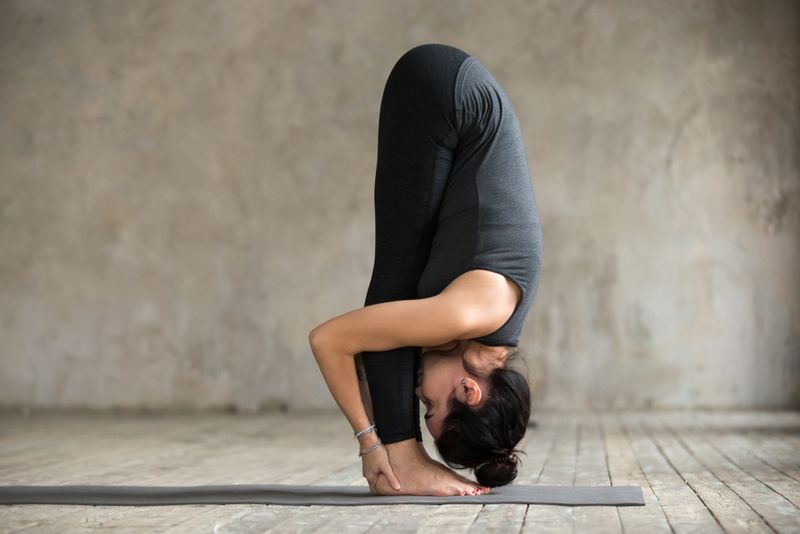
How it helps: Forward bends can help invert the head and increase blood flow to the brain, providing relief from the throbbing pain of migraines. This pose also stretches the hamstrings, calves, and hips and can help relieve tension in the spine and neck.
How to do it: Stand with your feet hip-width apart. Hinge at your hips and fold forward, reaching toward the ground. Keep your knees slightly bent if you feel too much strain in your back. Allow your head to hang heavily, releasing all tension in your neck. Hold for 30 seconds to 1 minute.
Corpse Pose (Savasana)

How it helps: Often used for relaxation at the end of a yoga session, Corpse Pose allows the body to absorb the benefits of the practice. It helps relieve stress and minor pain, reduces headaches, and promotes deep relaxation.
How to do it: Lie flat on your back with your legs slightly apart and arms at your sides, palms facing up. Close your eyes and breathe naturally. Allow your body to feel heavy and let go of all tension. Stay in this pose for 5-10 minutes.
Incorporating these poses into a regular yoga routine can help mitigate the frequency and severity of migraines by promoting relaxation, reducing stress, and improving overall physical health. Remember to move gently into and out of each pose, especially during a migraine attack, and consult with a healthcare provider if you have any concerns.
Integrating yoga into your routine
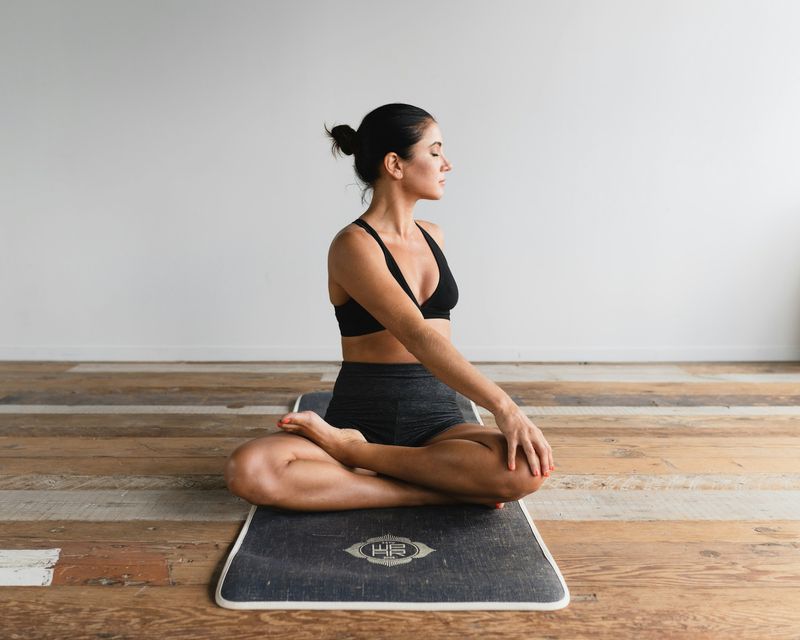
Starting yoga for migraine headache practice might seem daunting, but it’s quite feasible. Begin with short, 10-15 minute sessions, focusing on gentle poses. Listen to your body—if something doesn’t feel right, adjust or skip that pose. Over time, as you become more comfortable, you can extend your sessions and incorporate more dynamic poses.
Tips for a successful yoga practice
Stay hydrated: Water is crucial, especially since dehydration can trigger migraines.
Create a calming environment: Use dim lighting and perhaps some soft music to create a relaxing atmosphere for your yoga for migraine headache sessions.
Be consistent: Regular practice yields better results. Aim for at least 3 times a week.
Using yoga for migraines isn't just about relieving a headache—it's about creating a healthier lifestyle that can help reduce the frequency and severity of migraines. Whether you're a seasoned yogi or a beginner, some poses and practices can benefit you.
So, are you ready to say goodbye to migraine pain through yoga? Remember, while yoga is a powerful tool, it’s always a good idea to consult with your healthcare provider before starting any new exercise regimen, especially if your migraines are severe.
Why not roll out your mat and give it a try? Your journey to fewer headaches and more peaceful days is just a pose away. Here’s to a calmer mind and a pain-free head!




